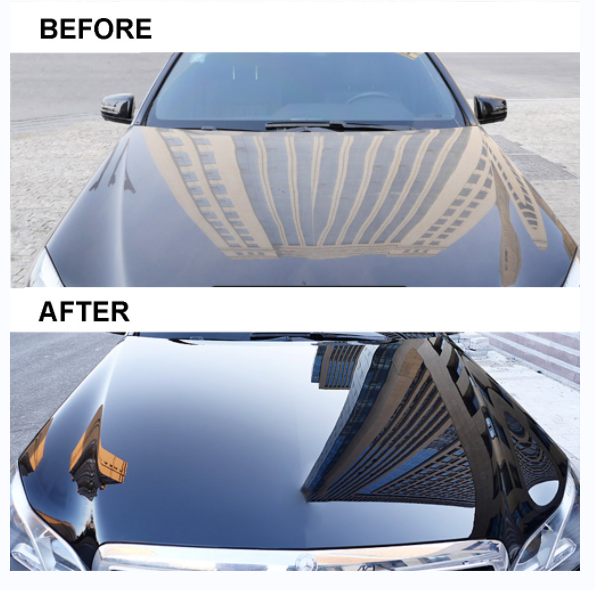Experience specialized scratch repair Sarasota for a like-new vehicle finish.
Experience specialized scratch repair Sarasota for a like-new vehicle finish.
Blog Article
A Comprehensive Guide to the Kinds of Ceramic Coating on the marketplace
Ceramic finishes have arised as a pivotal service across numerous markets due to their one-of-a-kind residential or commercial properties and applications. As we discover the distinct qualities and applications of these finishes, the effects for efficiency and longevity become progressively evident, elevating inquiries concerning which type might best suit your requirements.
Understanding Ceramic Coatings
Ceramic finishings are advanced safety solutions that have actually obtained appeal in various markets, particularly in auto and aerospace applications. These coatings are composed of a fluid polymer that, when healed, creates a long lasting, hydrophobic layer externally of the substrate. This layer gives improved resistance to environmental pollutants, UV radiation, and chemical direct exposure, therefore extending the life and aesthetic allure of the underlying product.
The essential component of ceramic coatings is silica, which adds to their firmness and toughness. The application process normally includes surface prep work, application of the layer, and treating, which can be attained with heat or UV light. When cured, ceramic finishes display outstanding bonding homes, enabling them to adhere strongly to a variety of surface areas, consisting of steels, plastics, and glass.
In addition to their safety attributes, ceramic coatings additionally use convenience of upkeep. Their hydrophobic nature lowers the adherence of dust and crud, making cleansing less complex and much less regular. Generally, the adoption of ceramic coverings represents a substantial improvement in surface area defense innovation, giving both practical and aesthetic advantages throughout multiple markets.
Types of Ceramic Coatings
Different sorts of ceramic finishes are readily available, each developed to meet specific performance requirements and applications - Paint Protection Film. The most typical kinds include:
Silica-based Coatings: These layers mostly include silicon dioxide and are understood for their sturdiness and chemical resistance. They are widely used in automobile and commercial applications.
Titanium Dioxide Coatings: Renowned for their photocatalytic residential properties, titanium dioxide finishings are frequently applied in environments where self-cleaning and antifungal homes are desirable, such as in building materials and vehicle finishes.
Zirconia Coatings: Defined by their high-temperature stability and thermal resistance, zirconia finishes are used in applications such as generator engines and high-performance vehicle elements.
Alumina Coatings: Exhibiting excellent solidity and thermal security, alumina finishes are often used in wear-resistant applications, including reducing devices and industrial machinery. - Auto Detailing
Crossbreed Coatings: Integrating the buildings of different materials, hybrid finishes use improved performance characteristics, making them ideal for special and demanding applications.
Each kind of ceramic covering serves distinct purposes, permitting individuals to pick one of the most ideal service based on specific environmental problems and efficiency demands.
Benefits of Ceramic Coatings
Coatings play an essential function in improving the performance and durability of surface areas across numerous industries. Ceramic finishes, specifically, deal various advantages that make them progressively preferred among suppliers and customers alike. One of the primary benefits is their remarkable longevity. These coatings are immune to scratches, chemicals, and UV rays, guaranteeing that the underlying surface continues to be safeguarded in time.
Along with durability, ceramic layers provide outstanding hydrophobic residential or commercial properties, allowing for very easy cleansing and maintenance. This water-repellent nature lessens the adherence of dust, crud, and various other impurities, which can prolong the aesthetic charm and capability of the surface. Ceramic coatings can substantially enhance thermal resistance, making them excellent for applications that endure high temperatures.

Application Refine
When applying ceramic layers, a careful technique is necessary to attain ideal results. The application procedure typically starts with comprehensive surface preparation. This involves cleaning, sanitizing, and brightening the surface area to eliminate all contaminations, including dust, grease, Recommended Reading and prior waxes or sealants. A tidy surface ensures proper bond of the finishing.
As soon as the surface area is prepped, the following action is to use the ceramic coating. The finishing must be used in slim layers, as thicker applications can lead to irregular finishes.
After application, the finishing calls for a particular treating time, usually varying from a couple of hours to a complete day, depending on the product. During this time around, it is crucial to stay clear of direct exposure to wetness or impurities. A gentle buffing may be necessary after healing to enhance the gloss and remove any type of high spots. Complying with these steps vigilantly will take full advantage of the performance and longevity of the ceramic covering, offering a resilient protective layer for the surface.
Maintenance and Long Life
To make sure the durability and efficiency of a ceramic finishing, routine maintenance is essential. Ceramic coverings, recognized for their resilience and safety high qualities, require details care regimens to maximize their life-span and performance. The very first step in maintenance includes routine cleaning with pH-neutral soap, preventing severe chemicals that can deteriorate the covering. It is advisable to clean the car on a regular basis, ideally every two weeks, to avoid the build-up of impurities that could compromise the finish's integrity.
Along with regular cleaning, regular examinations are crucial. Seek indicators of wear or damages, such as hydrophobic buildings lessening or surface blemishes. If needed, a light gloss may be used to invigorate the finish without removing it away.
In addition, the application of a booster spray can boost browse this site the finishing's hydrophobic effects and restore its gloss. This is particularly useful for finishes that have been in use for an extensive duration. Ultimately, by adhering to these upkeep methods, one can considerably prolong the life of a ceramic layer, making certain that it proceeds to provide optimal defense versus environmental aspects and maintain the visual allure of the vehicle.
Final thought

Report this page